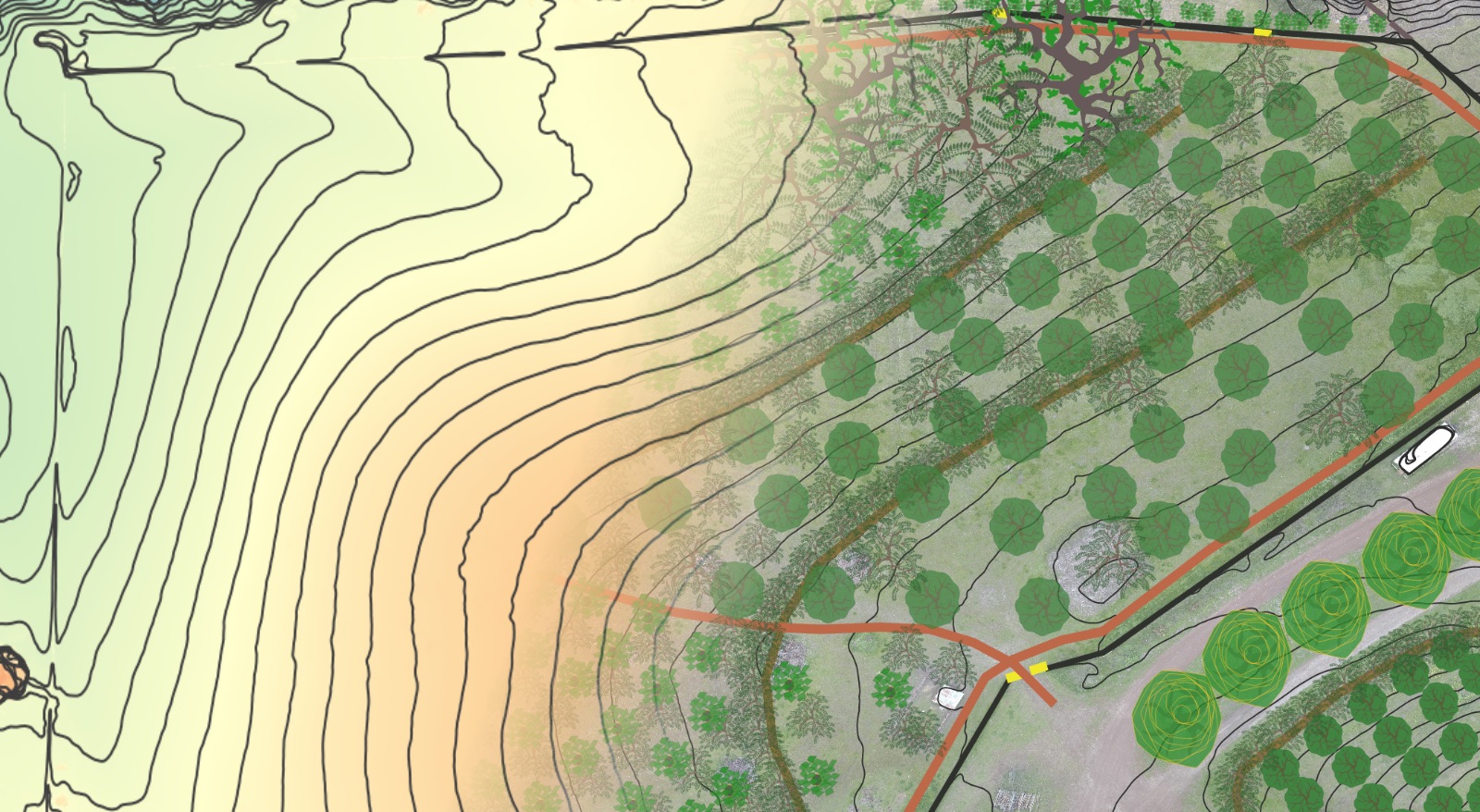Welcome To The Regenerative Economics Series
Regenerative Economics series is all about creating new ways to transact value outside the boundaries of State power, in service of Mother Earth, her people and creatures, and future generations.
- The Regenerative Agora: Counter-Economics For Stewards Of The Future
- Borrowing Without Intent To Repay: How Modern Fiat Currency Systems Concentrate Wealth By Design
- Creating Wealth With The 8 Forms Of Capital
- The 7th Generation Principle: Designing Ecosystems For Continuity Across Generations
- Exchanging Value In The Regenerative Agora: Cryptocurrency As A Medium Of Exchange
The Four Freedoms
The Four Freedoms is a framework composed of four mutually-supporting principles that act as the foundation for regenerative and sovereign lifestyle design.
While not explicitly mentioned in my consultancy work, these principles do inform my own individual perspective, and inherently undergird the design work I do.
I see the Four Freedoms as inextricably linked to one another. Take away, suppress, or fail to develop one and the rest all lose potency in equal fashion.
Freedom in time is a result of true abundance. Abundance is a state of living off the “interest”, or surplus, generated by natural systems without consuming the principal. Abundance arises when savings are continually reinvested to productive ends.
Freedom in health is continuous, harmonic energy flow amongst the mental, spiritual, emotional and physical aspects of our human nature. Health is dynamic state of purity and sufficiency of all things required to express optimal function.
Freedom in wealth is having access to required forms of capital when needed on the path to realizing one’s purpose. Wealth is a form of stored life energy that can be exchanged for other forms of life energy or consumed directly.
Freedom in spirit is self-knowledge and the courage to live true to it. To be free in spirit is to use self-knowledge to shed that which is not authentically oneself, and in so doing live ever more true to one’s purpose.
Each Freedom Is A Leg On A Stool
The Four Freedoms have a healthy interdependent relationship with one another. They need each other in order to be strong themselves. The old adage of ‘one is none’ is true – in fact three is none in this case. All four require diligent examination, work and tending in order that they be made strong so that the others can be strong. When the Four Freedoms are strong, together they create an environment that supports human flourishing in mind, body and spirit.

Let’s explore how they inter-relate with one another.
Freedom in health enables freedom in time, for without continuous, harmonic energy flow between one’s body, mind, emotions and spirit, abundance (a child of freedom in time) is deprived of the fertile soil of human life energy required for its creation.
In similar fashion, freedom in wealth is an extension of freedom in health. Just as harmonious, continuous energy flow is needed within the human body, mind and spirit to manifest health, harmonious, continuous flow between and access to appropriate forms of capital is required to successfully manifest one’s life purpose.
Freedom in spirit is essential for a life to be well lived. Without it the other freedoms cannot be fully realized and will wither and degrade. Freedom in spirit finds its root in self-knowledge and the continual pruning of that which is not the true self. This process, when made a lifelong practice, consistently manifests one’s life energy in the form of greater health and wealth, and liberates one’s time in ways ever more aligned with one’s purpose in life.
If one’s spirit is not free (self-limiting based on perceptions, opinions, and thoughts of or not of one’s own), how can it be healthy (continuously moving energy to harmonize life-supporting systems)?
How can one be wealthy (access to the necessary energies at the necessary time along the path of fulfilling one’s purpose) if one’s spirit is bankrupt and shackled by self-perception not aligned with one’s highest purpose?
How can one fully experience and enjoy freedom in time (a state of abundance), if the spirit is incapable of expressing it’s true self, or if it expresses that which is not it’s true self? The life energy is either repressed (fearful of what others might think, self-sabotage etc.) or hijacked (guided off course by misaligned or incomplete self-knowledge). Freedom in time cannot be created under such circumstances.
Listen to Episode 39 of The Sovereign Homestead Podcast for a deeper exploration of the Four Freedoms.
The Concept Of Freedom Levers
One way in which the Four Freedoms have integrated into our thinking is through the concept of ‘freedom levers’. Freedom levers are the little things, usually recognized in hindsight, that have an outsized impact on quality of life. Our goal is recognize these levers ahead of time with deliberate thinking anchored by the Four Freedoms (or whatever your version(s) of them might be).
The freedom lever idea revealed itself to me one day while I was vacuuming.
SPOILER ALERT: I really don’t like vacuuming. Something left over from childhood I think – I was always afraid the cursed machine would devour my toes.
On this day, however, vacuuming created the space for the concept of freedom levers to enter my thinking, and for that I am grateful.

As I was making my second pass over the middle of the floor (gotta be thorough you know?), it occurred to me that the decision to have the floors of the entire house carpeted had ramifications, one of which I was experiencing that very moment, 28 years after the carpet was installed.
So I asked the question, “What are all the elements that go into supporting the decision to have carpets in the house?”
I followed the butterfly, and here is what I found;
- By choosing to have carpets on the floors, one has to have a vacuum cleaner (if one cares about hygiene in the slightest way). Vacuums require electricity to operate and they break, and will require repair or replacement at some point. All of this costs money.
- That vacuum cleaner needs to be used about once a week by someone to keep the carpets in decent condition. This costs time – say 20 minutes a week (>17 hours per year) to vacuuming, moving furniture for the vacuum etc (these numbers are for a 1,700 square foot house, of which ~ 1,200 is carpeted). That’s over two full 8 hour days pushing around a suction machine over the carpets. Hmmm…
- In addition to the standard household vacuum cleaner, at least every year or two an industrial carpet cleaner needs to be rented or a professional carpet cleaning service needs to be hired to shampoo and steam the carpets to clean them in ways the household vacuum cannot.
- The household vacuum needs a place to be stored (closet), where it will sit for 999/1000ths of its life unused, taking up space.
- The house needs to have outlets with 110 AC electricity run throughout to be able to plug the power-hungry beast wherever its suction is required to maintain carpets. This means, in many cases, having a power supply to the house capable of sustaining a high-draw device like a vacuum (grid power for most, or a rather beefed up solar system for a few, or a generator, which requires gasoline).
Now, I know I am biased in writing this article. I don’t like vacuuming. I can and do, however, appreciate the necessity of a vacuum in maintaining healthy carpets, which are very nice to lounge around on. The preceding paragraph is not meant to malign vacuum cleaners and carpets. It is meant to illustrate the value in creating an initial accounting of the entire ecosystem of objects, energies, time, physical space and direct financial costs that goes into maintaining the ecosystem supporting the decision to have carpets in the home.
To help elucidate the concept of the Freedom Lever, let’s now examine an alternate choice, of say earthen flooring in a home, perhaps with throw rugs in place of carpet (we can be crunchy on this blog).
- Firstly, an earthen floor has the potential to come from the home site itself. The materials are free or inexpensive, durable and healthy (unlike industrially produced carpeting).
- A broom is all that is required to clean the floor – perhaps an occasional mopping too, assuming it has been treated with linseed oil and beeswax.
- No electrical power is needed for either the broom or mop, and because there are no cords to plug in and they are much lighter, they are much easier and quicker to use than a vacuum cleaner (things might actually get cleaned more often due to this lower barrier of entry).
- Throw rugs can be taken outside and shaken, or perhaps smacked with the broomstick to shake off any dust. For deeper, annual cleanings they can be soaked in a tub of water and agitated, then hung on a railing to dry (no renting a giant, heavy machine or hiring a carpet cleaning service necessary).
- The time required to clean an earthen floor is less than the weekly vacuum treadmill due to the simplicity and accessibility of the required tools (lets say ~15 minutes per week to be generous).
Again, the purpose of this exercise is not to malign carpeting and spout the benefits of earthen floors.
The purpose is to realize that every decision we make, every want and desire we have, has a slew of often un-appreciated or unknown costs and consequences.
We can make these costs and consequences known to us if we make the time to slow down, put pen to paper, and think.
If we ask ourselves about the second, third, fourth and fifth order consequences of making a decision a certain way, while we are sure to miss some, we will become aware of many. Awareness is the first ingredient required in making better decisions, especially with regards to things you are likely to live with for a while. We want to avoid making Type 1 Errors – those maladapted or poorly designed elements that cost us time, energy and money for as long as they exist in our system because they were not thought through thoroughly ahead of time in their given context.

‘Freedom Lever’ thinking is a tool for designing your life such that more time and energy is available for the things that matter to you most.
Explore The Entire Regenerative Economics Series
Regenerative Economics series is all about creating new ways to transact value outside the boundaries of State power, in service of Mother Earth, her people and creatures, and future generations.
- The Regenerative Agora: Counter-Economics For Stewards Of The Future
- Borrowing Without Intent To Repay: How Modern Fiat Currency Systems Concentrate Wealth By Design
- Creating Wealth With The 8 Forms Of Capital
- The 7th Generation Principle: Designing Ecosystems For Continuity Across Generations
- Exchanging Value In The Regenerative Agora: Cryptocurrency As A Medium Of Exchange





One response to “The 4 Freedoms: Principles For Regenerative Lifestyle Design”
[…] For the purposes of this article, I will define wealth as having access to required forms of capital when needed on the path to realizing one’s purpose. Wealth is an essential leg on the stool of a regenerative life well-lived. For more on this, read The 4 Freedoms: Principles Of Regenerative Lifestyle Design. […]